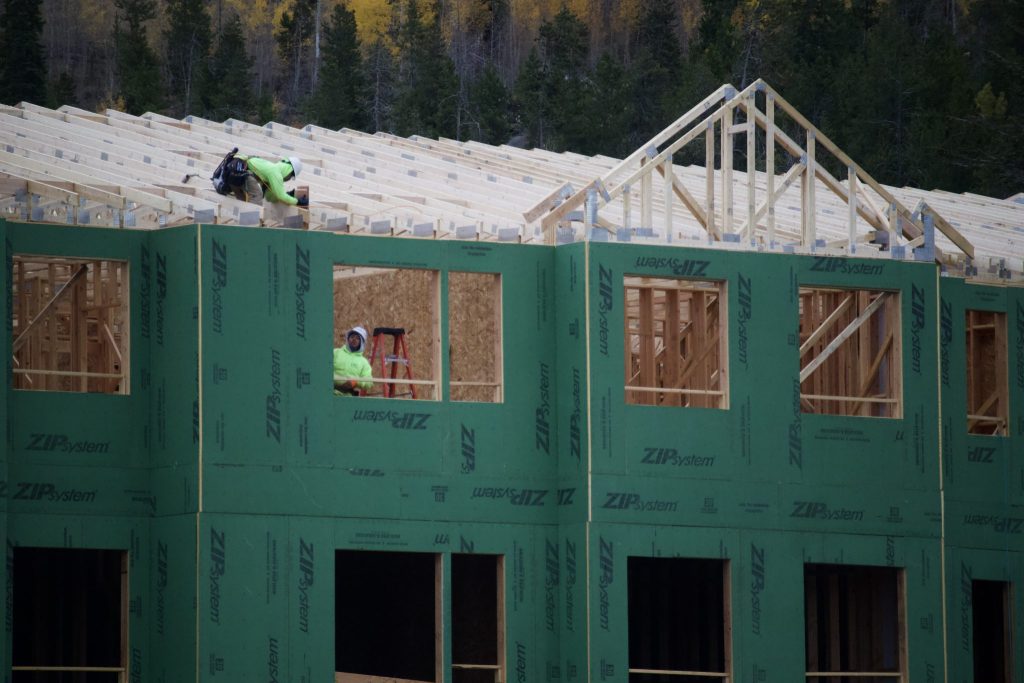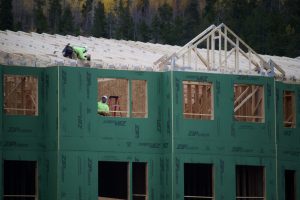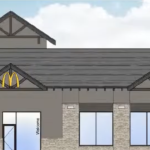Housing needs assessment finds Keystone might not need more units, but officials worry it doesn’t paint the full picture

Robert Tann/Summit Daily News
As Summit County’s newest town, Keystone is now working on a housing needs assessment of its own.
Keystone Town Council fielded a housing needs assessment draft from firm Economic & Planning Systems at a Tuesday, Oct. 28, meeting.
The general consensus from council was, while they didn’t feel the assessment was the most accurate snapshot of town’s housing needs, it will suffice for now because Keystone needs a housing assessment due to a bill passed at the state legislature in 2024. The assessment is also used for acquiring funds like those through Proposition 123, meant for workforce housing initiatives in Colorado. It’s also meant to inform the town’s comprehensive plan.
According to Economic & Planning Systems’s assessment, Keystone has a need for around 100-200 housing units based on factors including its employee base. The assessment also included a supplemental analysis giving insight into what type of area median income brackets residents fall into. It also determined Keystone currently already has around 322 dwelling units, meaning the assessment’s findings could be interpreted as asserting the town already has more housing than it needs.
The presentation given to Town Council stated “current inventory may meet workforce needs and preferences.”
Mayor Ken Riley said it’s a bit more complicated than that.
“It’s nowhere close to an exact accounting of what we need, but it gives us a good sense of what we need, particularly for demographics we have,” he said. “I think a lot of us (elected officials) are convinced the issue in Keystone is a demographic issue — that we have certain needs fairly well-covered, but there’s others that we don’t (have covered).”
He provided the example of the Village at Wintergreen, which he said is technically only partially in the town of Keystone’s boundaries. He said while development yielded a decent amount of condominium units, around 243 in total, they weren’t units that were necessarily suitable for families, especially for those with multiple kids. He said he feels there is a shortage of housing for families in Keystone.
Keystone elected officials and Economic & Planning Systems principal Brian Duffany discussed the demand for certain unit types versus the demand for units at-large at the Oct. 28 meeting. Officials particularly focused on the “missing middle.”
Council member Carol Kerr wondered if the council could still decide what type of housing the town needs, mentioning the want to “change the economic climate and attractiveness” by building units catering to the “missing middle.”
Duffany said that Keystone has a limited number of tools at its disposal to increase the housing diversity, but there are options that don’t involve building lots of new housing, like a deed-restriction incentive program for existing homes. He said to introduce any type of new housing, public-private partnerships are the best route to take.
Riley worried about the assessment finding Keystone “currently has all the housing (it) needs” putting the town at a disadvantage if it were to seek grants to build housing, particularly using Proposition 123 funds.
Duffany said he wasn’t sure, and the state’s Department of Local Affairs might be better suited to answer that question.
“This stuff is so new. They’re still trying to figure out how to implement it,” he said, referencing how the bill that requires most local governments to have a housing needs assessment passed in 2024 and mandates the requirement until 2026.
Methodology behind the assessment
The draft assessment used a nuanced approach to dictate the housing need in the town, taking into account statistics from 2019 and 2023 Summit County housing needs assessments and those from the US Census and Bureau of Labor Statistics.
The assessment took into account jobs and housing within Keystone Resort and in the rest of town. It also acknowledged that Vail Resorts covers much of the housing impacts and needs generated by its employees.
Duffany said, given the seasonal nature of many of the jobs in Keystone, it’s tough to quantify the housing needs those jobs produce, especially considering some employees may not live in the area year-round.
He said because trying to segregate data on seasonal employees from the workforce analysis produced “counterintuitive figures,” they abandoned that approach and just looked at the annual number of jobs held in Keystone. He added J1 visa holders were not included because they were not reflected in the U.S. Census and Bureau of Labor Statistics data.
The assessment found there were around 2,300 jobs held in Keystone overall, and that 93% of the workforce commute and around 7% live there.
It also utilized data from the 2019 Summit County housing needs assessment that showed around 12% of people living in Summit wanted to live in the Snake River Basin, including areas of unincorporated Summit County, Dillon, Montezuma and Keystone. Council member Aaron Parmet argued including data from a survey representative of the county at-large didn’t make sense.
“You’re taking 12% of the non-Vail Resorts jobs and using that to generate how many housing units we might need for Keystone. … This is not that,” he said.” This is apples and oranges. This is apples and rattlesnakes.”
Riley said the assessment presented to council Oct. 28 is just a draft and not the final assessment.

Support Local Journalism

Support Local Journalism
As a Summit Daily News reader, you make our work possible.
Summit Daily is embarking on a multiyear project to digitize its archives going back to 1989 and make them available to the public in partnership with the Colorado Historic Newspapers Collection. The full project is expected to cost about $165,000. All donations made in 2023 will go directly toward this project.
Every contribution, no matter the size, will make a difference.










